9 Loved Plants That Look Like Lavender

This post follows our research editorial guidelines.

If you’re anything like me, then you love the benefits of growing lavender in your garden; it smells sweet, looks great, and comes back every year if properly cared for.
but, maybe you already have this wonderful flower growing in your garden and would like to complement it with other flowers that look like lavender. Or maybe you love the look but just can’t seem to grow lavender where you live and are on the hunt for similar flowers.
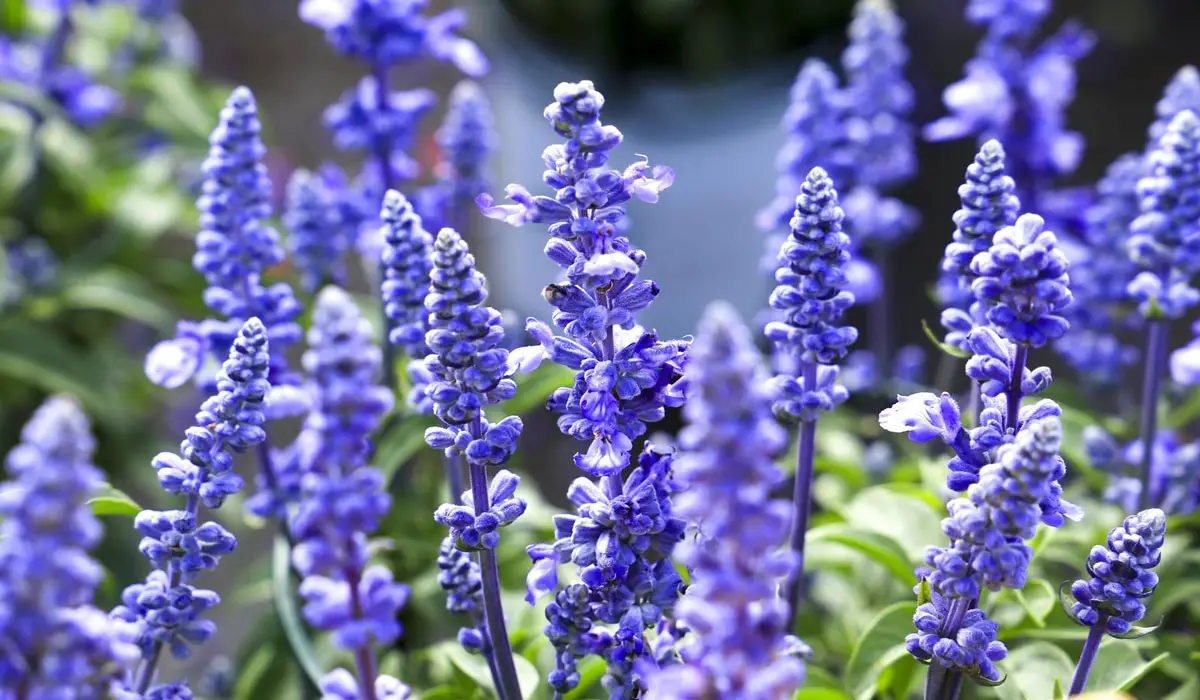
Luckily Lavender has plenty of lookalikes, almost as many flowers that look like daisies.
below, I go over my top list of flowers that look like lavender and why you should consider growing them in your garden. These plants are easy to grow, care for and are perfect for beginners.
Quickly Find Plants That Look Like Lavender:
1. Purple Salvias (Salvia Nemorosa)

Are you looking for ways to insert a little more color into your garden? If so, you should consider Purple Salvias.
These long-stemmed plants grow up to 16” tall and have bright, vibrant purple flowers that are real show-stoppers.
They require little maintenance and thrive best when exposed to six hours of full sun and up to four hours of shade.
Here’s what you need to know about caring for these flowers that bloom all summer:
| Botanical Name: | Salvia Nemorosa |
| Growth Rate: | 14-16” tall and up to 20” wide |
| Native Range: | Asia and Europe |
| Hardiness Zones: | 3-8 |
| Soil Needs: | Fertile, well-draining soil |
| Exposure: | Partial-full sun, shade |
| Blooming Period: | May-September |
2. Rosemary (Rosmarinus officinalis)
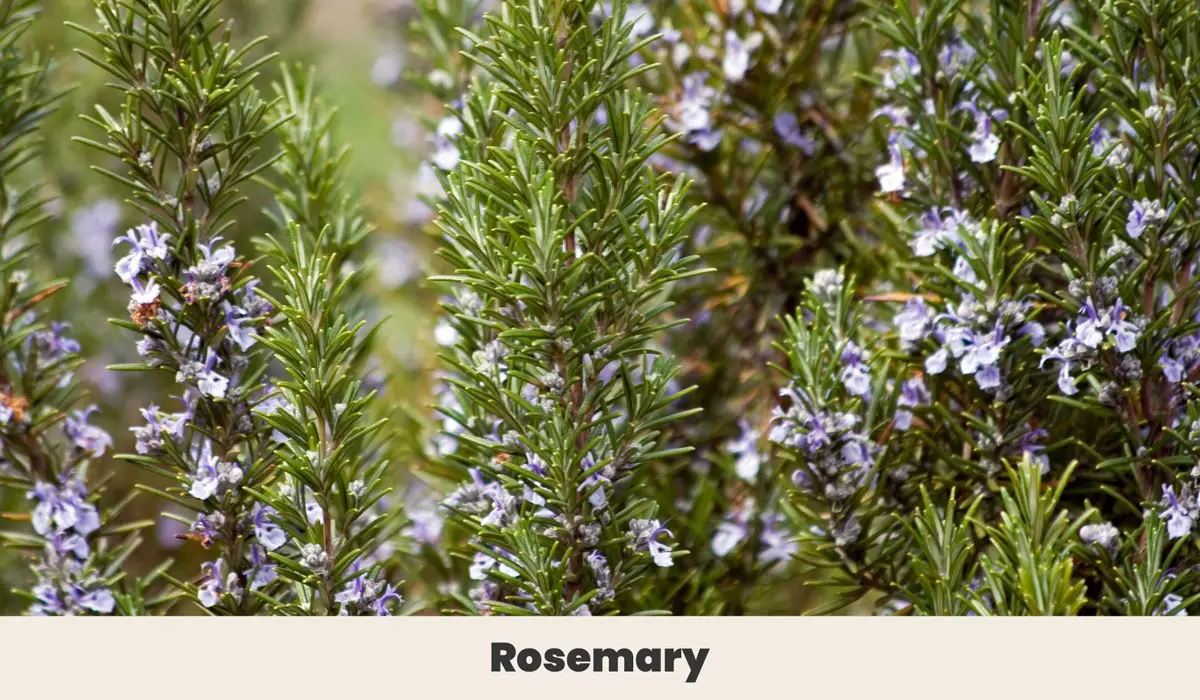
Are insects invading your garden? If you’re looking for a natural way to get rid of them, you should plant some Rosemary.
Rosemary is often used to naturally deter common pests including flies and mosquitos away from your garden, not to mention your backyard patio.
Plus, they make the perfect ground cover because they can adapt to any type of soil condition. Best of all, once in bloom, you can use Rosemary as a cooking herb.
Keep in mind that, even though Rosemary can be propagated by seed, “…this is not recommended because germination rates are very low and it takes up to three years to produce a bush sizable enough for harvesting.”
There are so many benefits to this plant, so if you’re eager to get started, here’s what you need to know about taking care of it:
| Botanical Name: | Rosmarinus officinalis |
| Growth Rate: | 2-6’ tall |
| Native Range: | The Mediterranean region |
| Hardiness Zones: | 8-11 |
| Soil Needs: | Sandy, fertile, well-draining soil |
| Exposure: | Full sun |
| Blooming Period: | April-November in warm regions |
3. Holy Basil (Ocimum tenuiflorum)

Holy Basil is often dried and steeped to brew a delicious tea, however, if you plan on growing it in your garden, you can also expect tall purple flowers that resemble the spears of lavender.
Holy Basil is part of the Mint family. This invasive shrub is easy to take care of, with the most work it requires being ongoing pruning.
This plant can grow very quickly, so you should start trimming it down the first month following planting.
| Botanical Name: | Ocimum tenuiflorum |
| Growth Rate: | 2’ tall and up to 2’ wide |
| Native Range: | Southeast Asia |
| Hardiness Zones: | 10b-11 |
| Soil Needs: | Rich, well-draining loam |
| Exposure: | Partial to full sun |
| Blooming Period: | All year |
4. Russian Sage (Perovskia atriplicifolia)
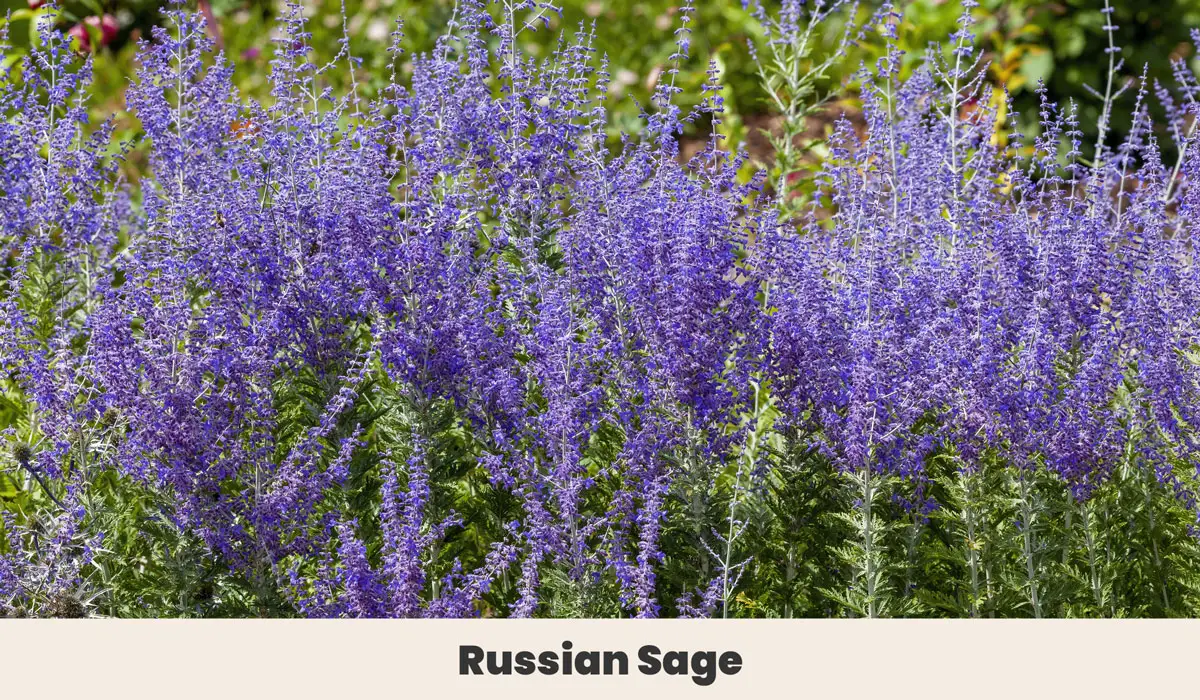
Russian Sage is a real showstopper. With its tall stems and bushy purple blooms, it will immediately draw eyes to your garden – as well as bees and other pollinators.
In fact, Russian Safe is one of the best plants to cultivate if you’re looking to attract more bees to your garden due to its fragrant, lavender-like scent.
This plant can get pretty big, up to 5 feet tall and 4 feet wide, so be prepared for this to take up a lot of space. It is a perennial, which means that, while it tends to have a shorter blooming period, it will regrow every spring.
Here’s what you need to know about caring for these beautiful, lavender-looking flowers:
| Botanical Name: | Perovskia atriplicifolia |
| Growth Rate: | up to 5’ tall and up to 4’ wide |
| Native Range: | Western China and the Himalayas |
| Hardiness Zones: | 5-9 |
| Soil Needs: | Dry, well-draining soil |
| Exposure: | Full sun |
| Blooming Period: | Summer – fall |
5. Hyssop (Hyssopus officinalis)
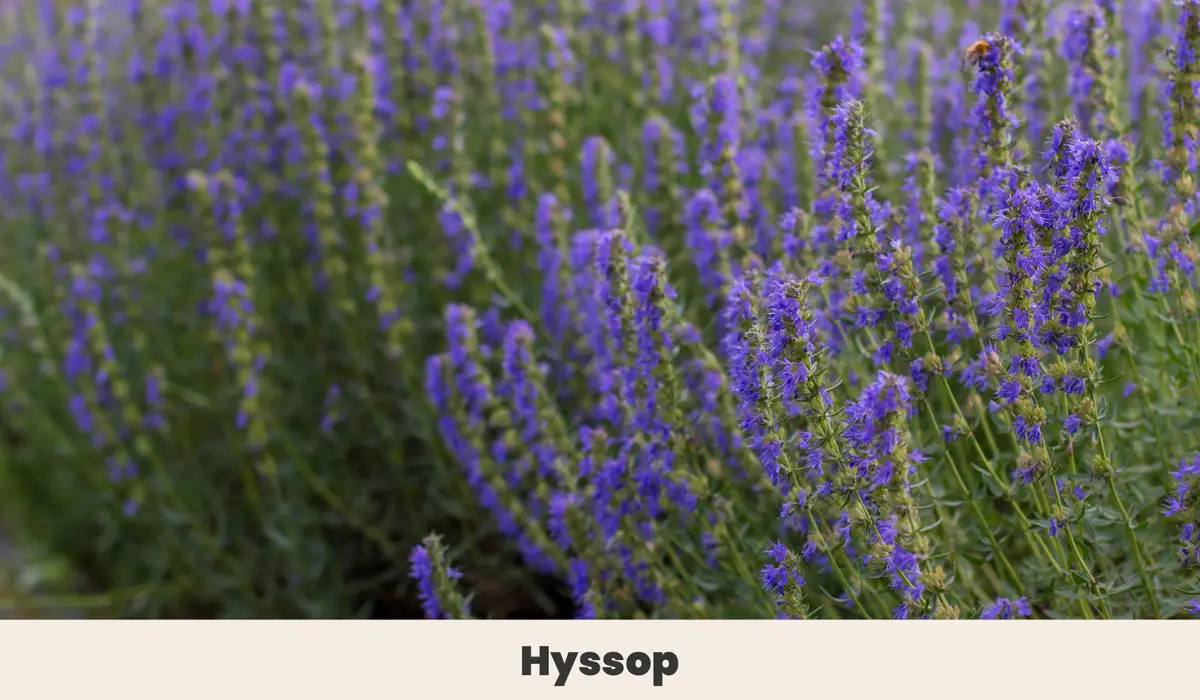
Like other plants mentioned on this list, Hyssop is a real visual stunner that makes a bold statement on your landscape, thanks to its tall purple blossoms.
These perennial shrubs are perfect for lining up against your fence or when used as a border. They usually give off a very fresh, woody scent to them.
The Hyssop plant also commonly attracts pollinators, like butterflies!
Hyssop is considered to be very low-maintenance, so it’s perfect for those that are just developing their green thumbs.
| Botanical Name: | Hyssopus officinalis |
| Growth Rate: | Up to 2’ tall and up to 1.5’ wide |
| Native Range: | Europe, North Africa, and Asia |
| Hardiness Zones: | 4-9 |
| Soil Needs: | Fertile, well-draining soil |
| Exposure: | Part shade – full sun |
| Blooming Period: | Summer |
6. Catmint (Nepeta Mussinii)
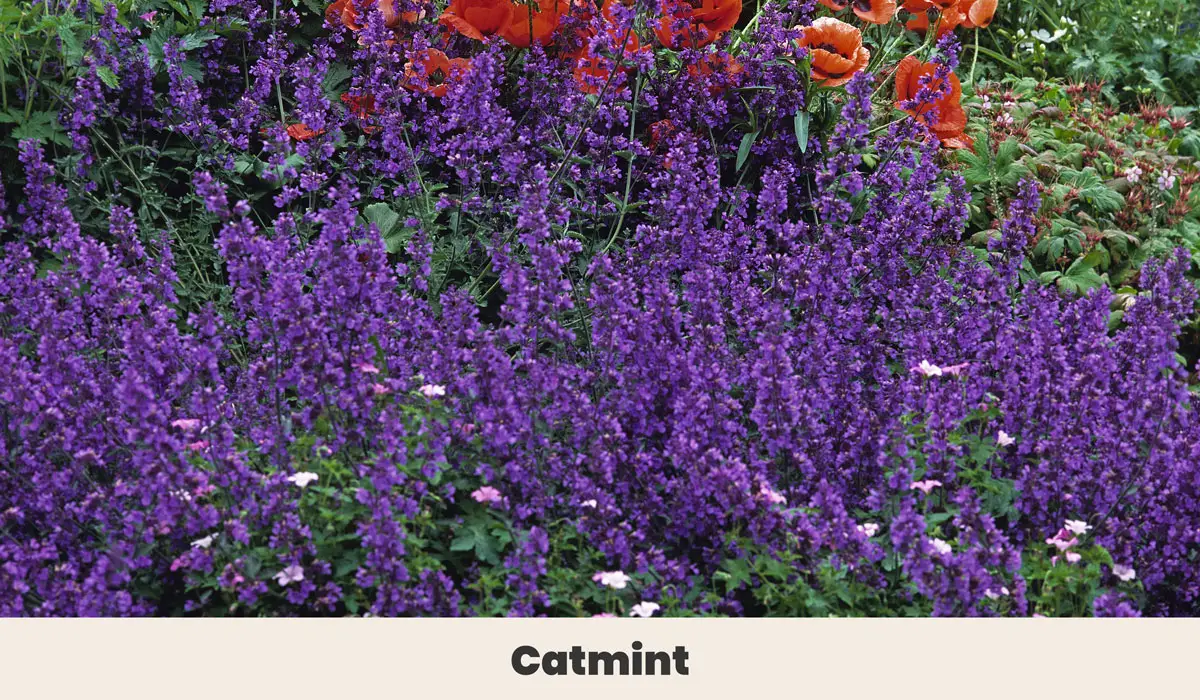
Aside from having a fun and eclectic name, Catmint works just as well in a garden as it does being used for ground cover or as a border.
When in bloom, Catmint has small, eye-grabbing purple flowers that can be used for homemade tea.
Catmint is pretty easy to take care of, only requiring well-draining soil and a little bit of compost when first planted. While this isn’t necessary, doing so will make your Catmint plant fuller.
Here’s what you need to know about caring for Catmint at home:
| Botanical Name: | Nepeta Mussinii |
| Growth Rate: | Up tp 36” tall |
| Native Range: | Northern Iran |
| Hardiness Zones: | 4-8 |
| Exposure: | Full sun |
| Blooming Period: | Early – late summer |
7. Showy Hebe (Veronica speciosa)
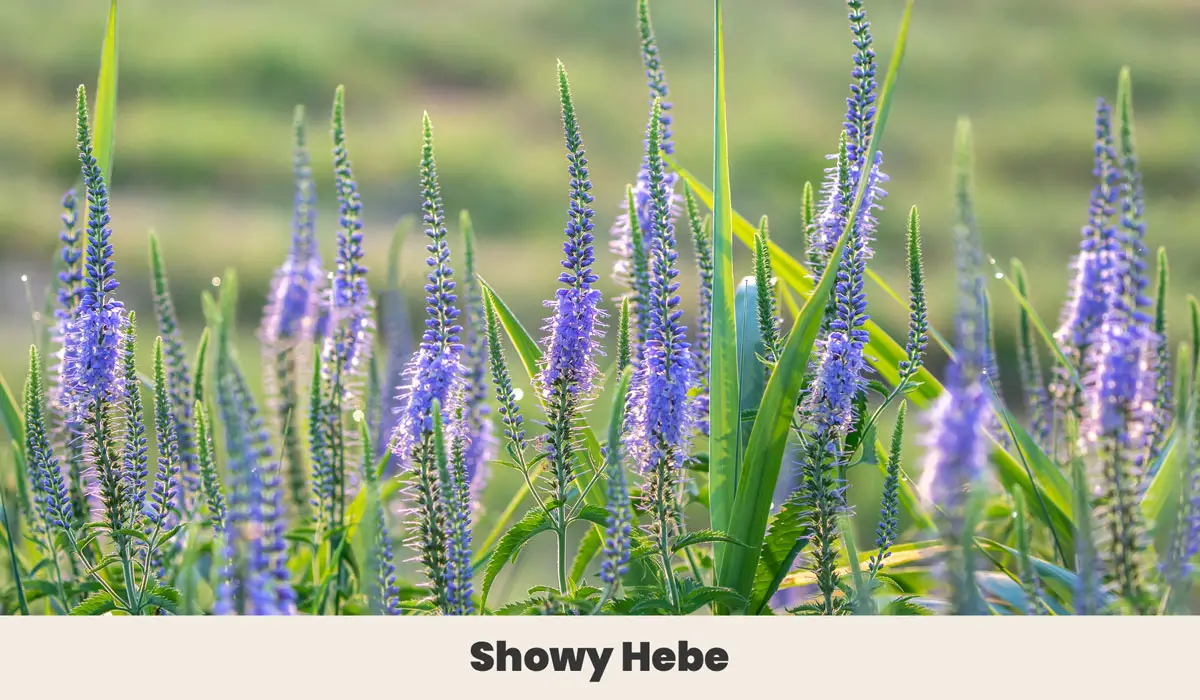
Aesthetic-wise, the Showy Hebe is quite an interesting plant thanks to its textured, pine-cone-looking flowers.
Since it looks like a tropical flower, it’s the perfect plant to choose if you want to add a little bit of tropical flare to your garden.
Though the Showy Hebe is easy to care for, be mindful that it absolutely cannot grow in either full or partial shade. It needs full sun and moist soil to thrive.
If you’re interested in growing some Showy Hebe, here’s a helpful care guide to doing so:
| Botanical Name: | Veronica speciosa |
| Growth Rate: | Up to 5’ tall |
| Native Range: | New Zealand |
| Hardiness Zones: | 6-9 |
| Soil Needs: | Well-draining, moist soil |
| Exposure: | Full sun |
| Blooming Period: | Late spring – mid-summer |
8. Anise Hyssop Blue Fortune (Agastache)
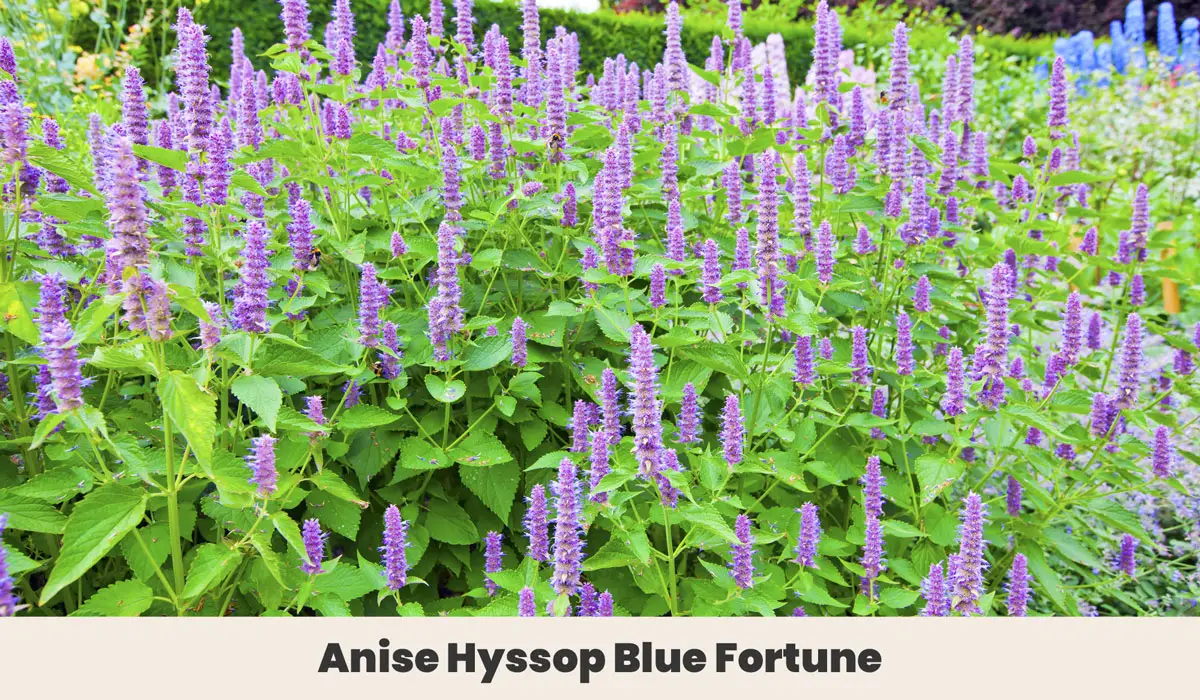
Also known as a Blue Fortune, these blue-purple-colored flowers are tall, sticky cones that commonly attract bees, butterflies, and hummingbirds.
Like the other plants on this list, the Anise Hyssop Blue Fortune is a low-maintenance plant, only requiring compost when first planted.
Once the root system is established, you can cease watering the plant because of its tolerance to droughts.
| Botanical Name: | Agastache |
| Growth Rate: | 2-3’ tall and up to 24” wide |
| Native Range: | North America |
| Hardiness Zones: | 5-9 |
| Soil Needs: | Dry, well-draining soil |
| Exposure: | Full sun |
| Blooming Period: | Middle of summer – early fall |
9. Purple Rain – Ornamental Onion (Allium × cristophii)
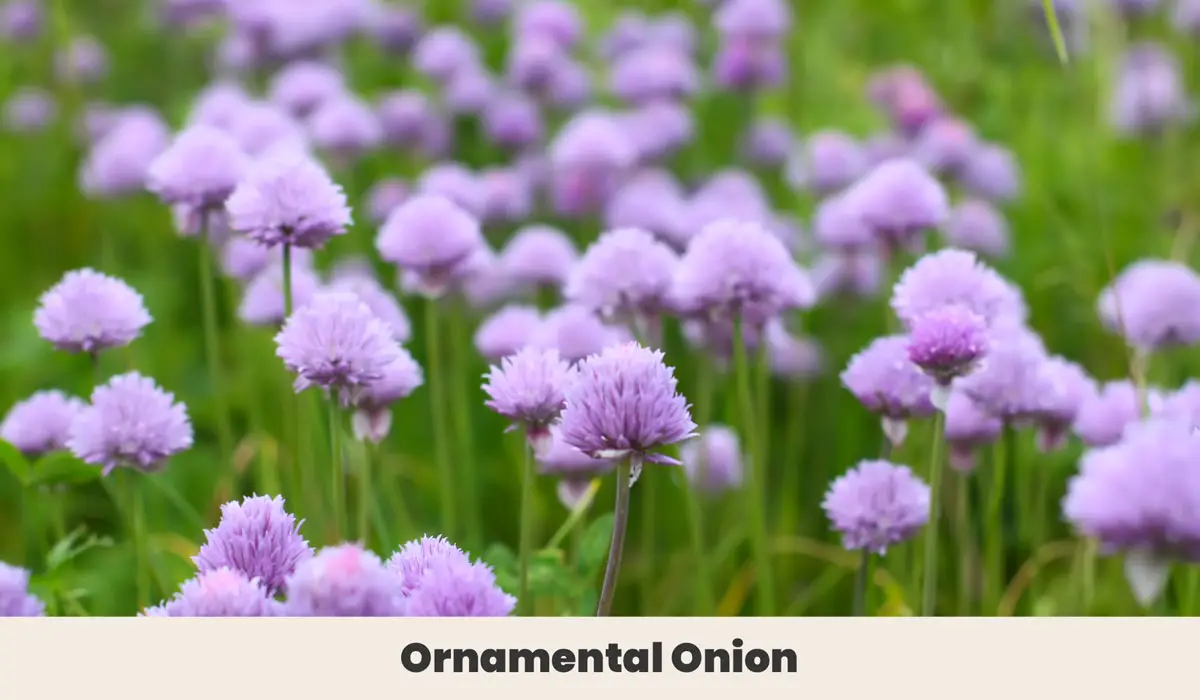
The Purple Rain – Ornamental Onion is one of the most interesting plants on this list due to their large circular shape.
While these do look similar to an onion, they get their name due to the scent they emit is similar to an onion.
When in bloom, these flowers can grow to be up to 36” tall and, if pruned regularly, will come back the following year.
If you plan on adding these to your garden, it’s recommended that you plant at least 15 of them because otherwise, they’ll be hard to miss.
Thinking of adding these to your garden? Here’s what you need to know:
| Botanical Name: | Allium × cristophii |
| Growth Rate: | Up to 36” tall |
| Native Range: | Middle East |
| Hardiness Zones: | 4-7 |
| Soil Needs: | Fertile, well-draining soil |
| Exposure: | Full sun |
| Blooming Period: | Late spring – early summer |
Before You Go!
Not only do all of the plants mentioned on this list have similar qualities to lavender, but they all can create a visually stunning garden that will attract the best pollinators to help everything else in your garden bloom.
I’ve put together a few more favorite flowers I think you might like. So if you have the time, stick around and see some more:
Have a question or did I miss one of your favorites? Let me know in the comment section below. I make sure to respond to everyone who gives their time. 😊

Before you go!
12 Low-Light Outdoor Plants: Illuminate Your Garden With Shade Loving Plants
7 Best Greenhouse Shelf Ideas: Grow More With Less Space
11 Shrubs With Red Leaves All Year Round
11 Houseplants with Red Leaves